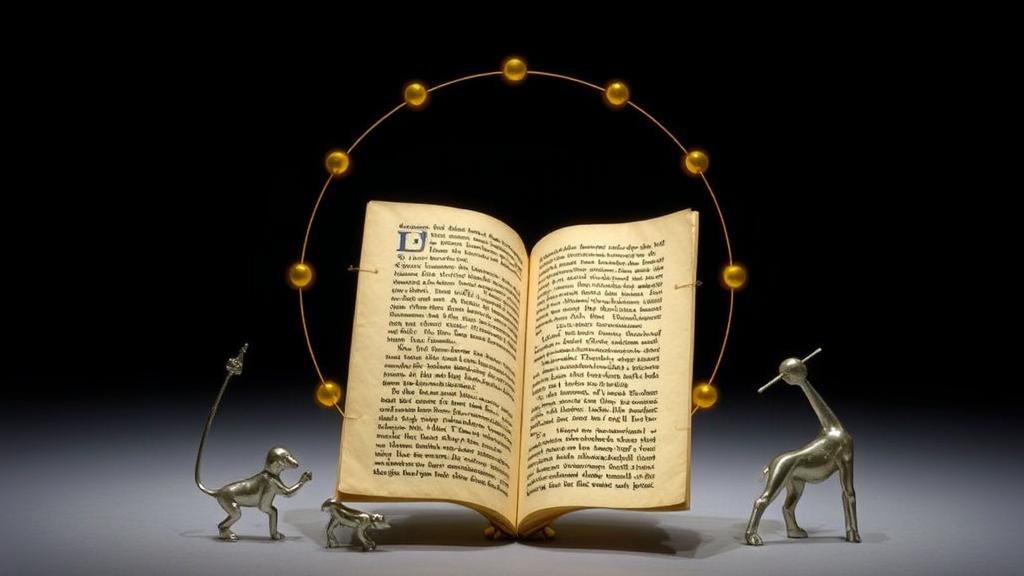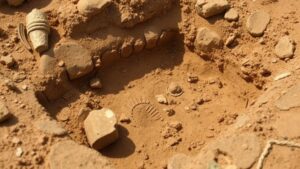Using AI to Cross-Reference Religious Texts with Archeological Findings
Using AI to Cross-Reference Religious Texts with Archaeological Findings
The intersection of artificial intelligence (AI) and archaeology represents a burgeoning field, where computational methods yield new insights into ancient societies through the lens of religious texts. By leveraging AIs analytical capabilities, researchers are increasingly able to cross-reference sacred writings with archaeological discoveries to enhance our understanding of historical contexts, belief systems, and cultural practices.
Understanding the Historical Context
The significance of religious texts in understanding ancient civilizations cannot be overstated. For example, the Hebrew Bible has been pivotal in the study of ancient Israels culture, politics, and religion. In parallel, archaeological findings in regions such as Jericho and Tel Aviv have provided tangible evidence supporting or contradicting narratives found in these texts.
According to the Israel Antiquities Authority, numerous artifacts from these sites, some dating back to 10,000 BCE, illustrate a complex, organized society capable of significant architectural achievements, which aligns with textual descriptions of early Israelite practices.
The Role of AI in Textual Analysis
AI technologies, such as machine learning and natural language processing, have propelled advancements in the analysis of large volumes of text. These tools enable historians and archaeologists to:
- Identify patterns and anomalies within religious texts.
- Analyze linguistic shifts over time to ascertain historical contexts.
- Automate the classification of artifacts according to descriptions found in sacred writings.
For example, a collaborative project between Stanford University and the University of Cambridge employed AI algorithms to scrutinize the Septuagint (the Greek translation of the Hebrew Bible). The study revealed linguistic trends that may correlate with specific historical phases in the region, suggesting how texts were adapted or interpreted across cultures and eras.
Case Studies: Cross-Referencing Texts and Findings
Several noteworthy case studies illustrate the practical application of AI in this domain. One prominent example is the discovery of a seal in the ruins of a building in Jerusalem dated to the 8th century BCE. The seal bears the inscription of a name cited in biblical texts. Researchers utilized AI to analyze patterns in script and materials that confirm this findings historical authenticity, linking it directly to the Jsus as mentioned in 2 Kings 15:5.
Another significant instance arose from the use of AI to analyze the Book of Mormon, specifically during the 2021 International Society for Science and Religion conference. Archaeologists presented findings from Mesoamerica that suggested physical structures and artifacts, such as pyramids and ceremonial locations, that match descriptions within the text. AI models were employed to quantify similarities between textual descriptions and archaeological data, confirming possible historical connections.
Challenges and Ethical Considerations
Despite the promise that AIholds for this discipline, several challenges and ethical concerns remain. Many experts caution against over-reliance on technology without sufficient human oversight. nuances of language and cultural context are often lost in automated processing, leading to potentially misleading interpretations.
- Machine learning models require substantial datasets to train effectively, which may not be available for all cultures or time periods.
- Ethical considerations surrounding the interpretation of religious texts can complicate scholarly consensus.
Also, as noted by the National Endowment for the Humanities, integrating AI in textual studies must include diverse scholarly perspectives to ensure that interpretations do not unjustly favor one narrative over another.
Conclusion: Toward Future Discoveries
The integration of AI in the cross-referencing of religious texts and archaeological findings represents a significant advancement in historical research. Although challenges remain, the intersection of technology and tradition fosters a more nuanced understanding of our past. For future studies, the following actionable takeaways are paramount:
- Encourage interdisciplinary collaboration between technologists and humanities scholars.
- Develop comprehensive datasets that account for diverse historical contexts.
- Maintain ethical standards in interpretation that honor the integrity of cultural narratives.
To wrap up, AI offers profound tools for illuminating the past and enhancing our comprehension of the human experience through the exploration of religious texts and archaeological contexts.



